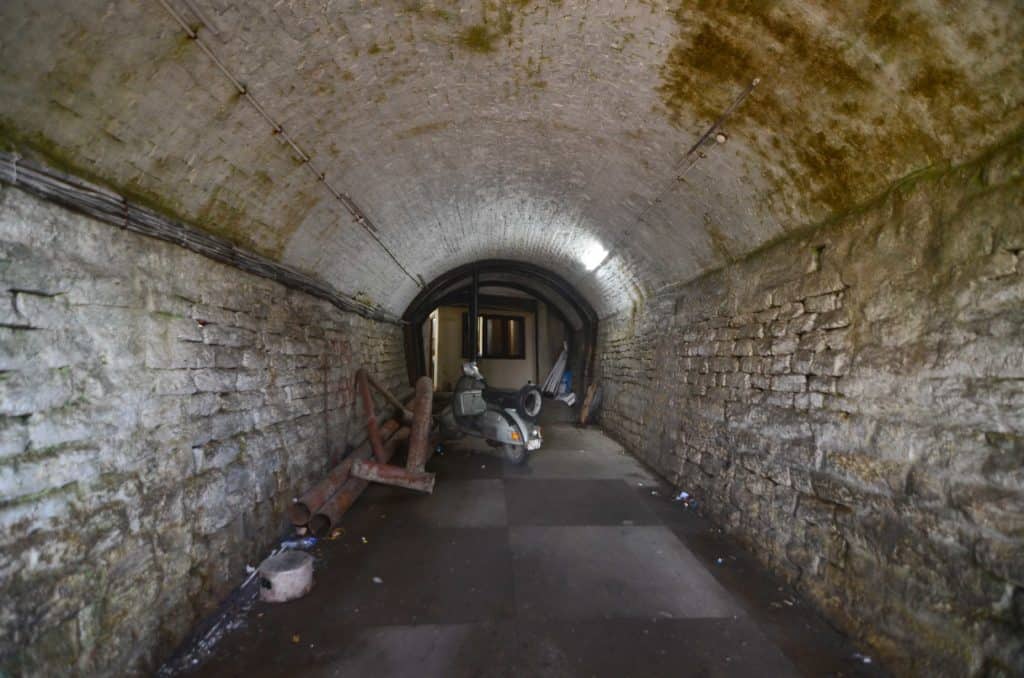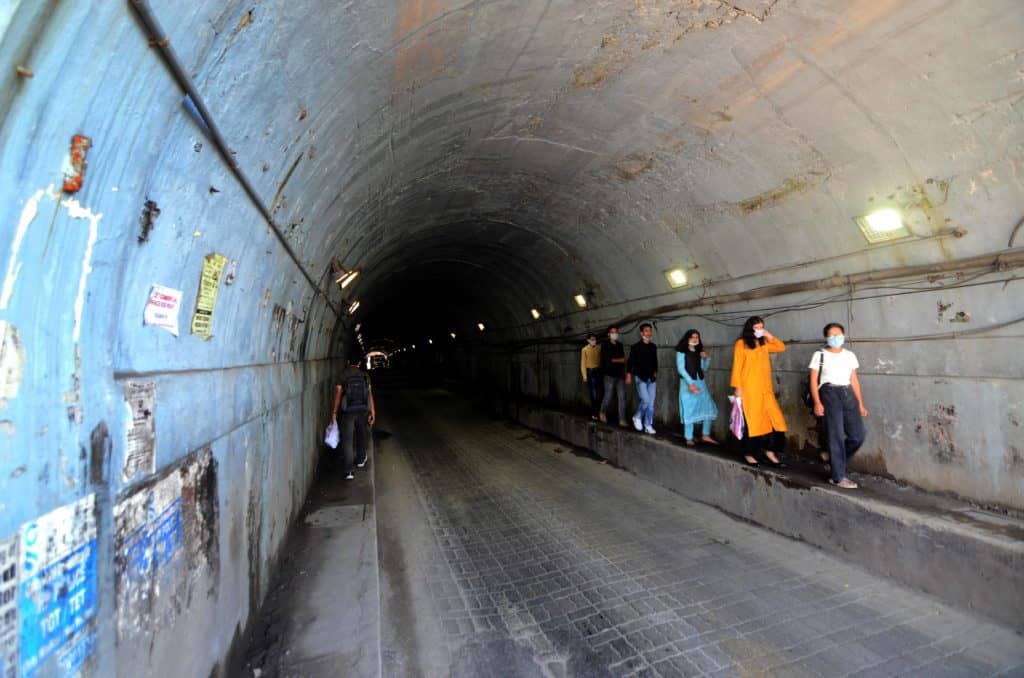In cities, flyovers and elevated walkways enable movement of vehicles and people. In the hill regions, tunnels perform the same function, as can be seen in Europe and Scandinavia. Shimla is no exception to this.
“When Britishers conceptualised Shimla, they considered tunnels an important component of mobility, especially for pedestrians and built five such tunnels in the town,” says Rakesh Sharma, a retired IAS officer.
“The importance of the tunnels still remains a key component of urban mobility plans in the hills”, adds Sharma, who was associated with the framing of Shimla’s Interim Development Plan (SDP), which was first finalised in 1979.
There have been subsequent modifications and amendments to the plan, the last one being in 2016 relating to land use, and to enforce certain orders of the National Green Tribunal.
“By and large the plan is still in force and a final update is nearing completion,” says Rohit Jamwal, Director, Town and Country Planning. “Upkeep and protection of the tunnels will definitely be included in the plan”.
But that is for the future. Presently, of Shimla’s five original tunnels, one was filled up to raise the 11-storey High Court building in 2003-04. The other four, though being used for the traffic and pedestrian movement, are poorly maintained.

The transition of Shimla from a small hill station to the fastest growing urban amalgamation in Himachal Pradesh — leading tohaphazard growth, huge tourist influx, burgeoning population and vehicular congestion — have contributed to the abuse and neglect of these colonial landmarks.
The buck stops where?
But where does the buck stop for the miserable condition of the town’s old assets? The Shimla Municipal Corporation (SMC) passes the blame to state’s PWD and cites lack of funds for the upkeep and maintenance of the tunnels.
But former Deputy Mayor Tikender Panwar insists that funds are not a problem. “The World Bank (WB) is ready to give Rs 1001 cr for city mobility,” says Panwar. “It is sad that Suresh Bhardwaj, the state’s urban development minister made no effort to process the funding proposal despite being Shimla’s MLA. Given the traffic congestion on Shimla’s narrow roads, we need two or three new tunnels to ease traffic movement. But even the existing tunnels are ill-maintained. It’s a sad story.”
Older residents recall how the ‘Ravenswood’ tunnel, now filled up after construction of the High Court, used to be a much-used short cut to reach the Mall road from Bamloe — a residential colony where many state and central government officials used to stay in old colonial type homes designed to suit the hill setting.
Most of these houses are still there. In fact, this tunnel was built specially to connect Bamloe to The Mall, where the famous Oberoi Clark’s is located.
“This 65-foot-long tunnel was a boon for pedestrians and remained so for 74 years,” recalls S N Joshi , a reputed writer/author and retired IAS officer. “But it had to be dismantled in 1996 for security reasons.”
Joshi also remembers the ‘Elysium tunnel,” a 120-feet pathway built in 1905, which has been sealed since the summer of 2007. “This used to enable vehicular traffic connect with the Longwood loop of the circular road. For students of the erstwhile S D College, now the state-run all girls Rajkiya Kanya Mahavidyalaya, and two schools, Auckland and Chapsle, located there, the tunnel shortened their travel distance by a kilometre.”
A second major tunnel, the Lakkar Tunnel, was supposed to get a new lease of life through the intervention of the High Court. Though the PWD dismantled the old tunnel, raised its height, built new staircases and widened the tunnel road, the condition of the tunnel is far from satisfactory.
In fact, the ‘renovated’ tunnel poses greater risk of accidents and has developed cracks due to poor construction quality. Thankfully, the Auckland house school survived the tunnel’s reconstruction.
The two key tunnels
Traffic density is the highest on two other important tunnels – Victory Tunnel and Dhalli tunnel, which provide vital connectivity to traffic to and from Shimla. In 2007-08, the Sanjauli bypass was created to divert out-bound vehicular traffic, especially heavy goods vehicles. That has reduced traffic in the Dhalli tunnel to some extent, but the Victory Tunnel, constructed in 1945 to link the Railway station and main Bus stand, remains the busiest.

“The tunnel was opened immediately after the celebration of the victory of Allied forces over the Axis powers on May 8, 1945,” recalls Joshi. “It is the widest and best lit tunnel,” he had written in one of his articles on Shimla. Today, it is used by all outbound vehicles heading to the tourist destinations of Kufri, Naldehra, Narkanda and Rampur-Kinnaur, besides the city’s Kotkhai-Rohru belt, where the state’s main apple trade centres are located.
The Dhalli tunnel, built some 125 years back, was in pathetic condition till some years back. This has now been renovated with proper lighting, a well-paved surface and pedestrian pathways. Water seepage, posing a threat to the tunnel safety, was also fixed. But the unplanned construction of multi storey buildings above and around the tunnel poses risks to users, as Shimla falls in a high seismic zone.
“We have a plan to build a new tunnel parallel to this old tunnel under the Smart City project,” says Pankaj Rai, Commissioner, Shimla Municipal Corporation. “The new tunnel, approximately 150 metre long and costing Rs 48-50 crore, will help in alternating the one-way traffic to and out of Shimla.”
Finally, the century old fifth tunnel, known as ‘ Lower Bazaar’ tunnel and meant for pedestrians only, connects Shimla’s old Gunj bazar with Lakkar bazar and Cart-road. In colonial times, all trade items bound for the town’s peripheral localities and neighbouring princely states used to be carried through this tunnel on mules (Khacchar) as the British had banned the movement of mules and ‘coolies’ through the Mall.
Located beneath Shimla’s ‘Scandal Point’, a central point of the Mall, this tunnel underwent massive renovation but not without controversy over reduction in the tunnel’s width. A new lighting system and the removal of vendors from the tunnel however was welcomed.
Other priorities
In 2000, the state government realised the need for digging at least two more tunnels for reducing traffic congestion on the Cart-road—Shimla’s ring road. The PWD had prepared detailed project reports for these and submitted to the state government some years back.
But three successive governments since then have ignored the proposal.
Urban Development minister Suresh Bhardwaj talks about a third tunnel between Himfed Petrol Pump to IGMC to bypass Sanjauli. “Though the tunnels are feasible they don’t seem to be a possibility as budget priority is on smart city projects like 24-hr water supply, green transport and e-governance services,” says Bhardwaj.
“Already we have lost 20 years in the planning for those two or three tunnels. Nothing has happened and perhaps never will. So, for now we are planning just one tunnel at Dhalli”.
Great information aired.Really commendable